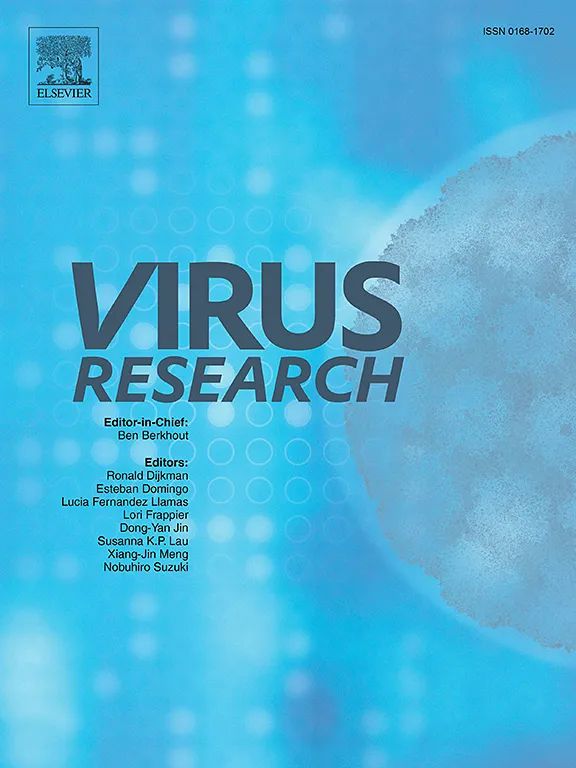Human pegivirus -1 (HPgV-1) RNA frequency and genotype distribution in pediatric oncology patients with febrile neutropenia
IF 2.5
4区 医学
Q3 VIROLOGY
引用次数: 0
Abstract
Human Pegivirus-1, typically regarded as a commensal virus, exhibits high prevalence in humans. Its frequency and impact on oncologic pediatric patients with febrile neutropenia (FN), a frequent chemotherapy complication, remains unexplored. In this study, we assessed HPgV-1 RNA prevalence in pediatric patients experiencing FN. Blood samples were collected from 30 children, 15 presenting FN and 15 comprising a control group of either undergoing treatment or in remission. Overall, HPgV-1 RNA was detected in 23.3 % of samples (26.7 % among FN patients and 20.0 % among those under treatment or in remission). Phylogenetic analysis unveiled HPgV-1 genotype 2 predominance among these samples, the most prevalent strain circulating in Brazil. Our findings prompt crucial inquiries into the role of HPgV-1 RNA in FN: is it an incidental finding and if it can influences this clinical entity? Further investigation is imperative to elucidate HPgV-1 implications in vulnerable patients cohorts, potentially informing new approaches and understanding viral dynamics in immunocompromised populations.
人类疱疹病毒-1(HPgV-1)RNA 频率和基因型在患有甲状腺功能减退症的儿科临床患者中的分布。
人类 Pegivirus-1 通常被认为是一种共生病毒,但在人类中的流行率很高。它在儿科肿瘤患者发热性中性粒细胞减少症(FN)(一种常见的化疗并发症)中的感染频率和影响仍未得到研究。在这项研究中,我们评估了发热性中性粒细胞减少症儿科患者的 HPgV-1 RNA 感染率。我们采集了 30 名儿童的血样,其中 15 名儿童患有 FN,15 名儿童为对照组,他们要么正在接受治疗,要么病情有所缓解。总体而言,23.3%的样本中检测到了HPgV-1 RNA(FN患者为26.7%,正在接受治疗或病情缓解的患者为20.0%)。系统发育分析表明,在这些样本中,HPgV-1 基因型 2 占主导地位,是巴西流行最广的病毒株。我们的研究结果促使人们对 HPgV-1 RNA 在 FN 中的作用进行重要的探究:它是偶然发现的吗?必须进一步调查,以阐明 HPgV-1 在易感患者群中的影响,从而为新方法提供信息,并了解免疫功能低下人群中的病毒动态。
本文章由计算机程序翻译,如有差异,请以英文原文为准。
求助全文
约1分钟内获得全文
求助全文
来源期刊

Virus research
医学-病毒学
CiteScore
9.50
自引率
2.00%
发文量
239
审稿时长
43 days
期刊介绍:
Virus Research provides a means of fast publication for original papers on fundamental research in virology. Contributions on new developments concerning virus structure, replication, pathogenesis and evolution are encouraged. These include reports describing virus morphology, the function and antigenic analysis of virus structural components, virus genome structure and expression, analysis on virus replication processes, virus evolution in connection with antiviral interventions, effects of viruses on their host cells, particularly on the immune system, and the pathogenesis of virus infections, including oncogene activation and transduction.
 求助内容:
求助内容: 应助结果提醒方式:
应助结果提醒方式:


